Zotac's Ion: The World's First mini-ITX Ion Board
by Anand Lal Shimpi on May 12, 2009 12:00 AM EST- Posted in
- GPUs
Of all of the technologies VIA introduced over the years, I never expected a form factor to be its lasting legacy on the PC industry. The most ubiquitous of VIA’s technologies were its chipsets which are all but gone now - used only by VIA for the most part. VIA’s form factor however, lives on.
The form factor is ITX. Originally introduced by VIA to accompany its line of low-power microprocessors, long before Atom, ITX was designed to deliver much smaller computers than what was defined by the micro-ATX spec.
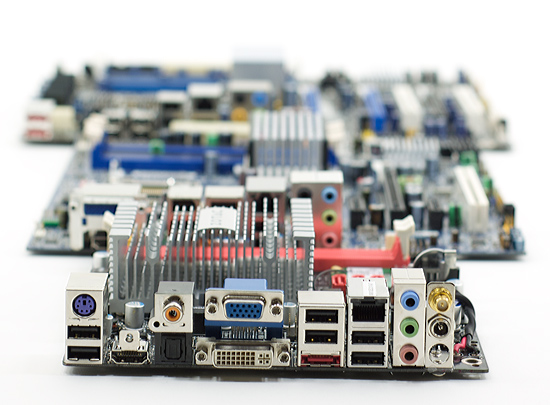
From front to back: Mini-ITX, micro-ATX, ATX
Intel was actually first to market a mini-ITX Atom based motherboard: the D945GCLF. Based on a single-core Atom 230 running at 1.6GHz, the D945GCLF is a relatively simple motherboard.

Intel's first desktop Atom board
It has a single DDR2 DIMM slot supporting up to 2GB of memory (DDR2-400 or 533 only). There’s no support for a modern day GPU, there’s only an old 32-bit PCI slot on the motherboard. You get two SATA and one PATA connector on board, four USB, no DVI/HDMI output (only VGA) and a standard set of three analog audio ports.

The tall heatsink in the back is for the chipset, the small one is all you need for the CPU

As its name implies the D945GCLF uses Intel’s 945G chipset and correspondingly slow graphics. However if you don’t need a ton of performance, Intel’s desktop Atom solution is quite attractive as it sells for under $70 - CPU included (it’s soldered onto the board).
With the quiet introduction of the dual-core Atom, Intel released the D945GCLF2. Nearly identical to its single core predecessor, the D945GCLF2 uses a larger heatsink on the CPU and a smaller one on the GMCH (although it is still cooled by a fan). The board also uses a 24-pin ATX power connector instead of a 20-pin connector, adds S-Video out and a Gigabit Ethernet port (the D945GCLF only has a 10/100 port).
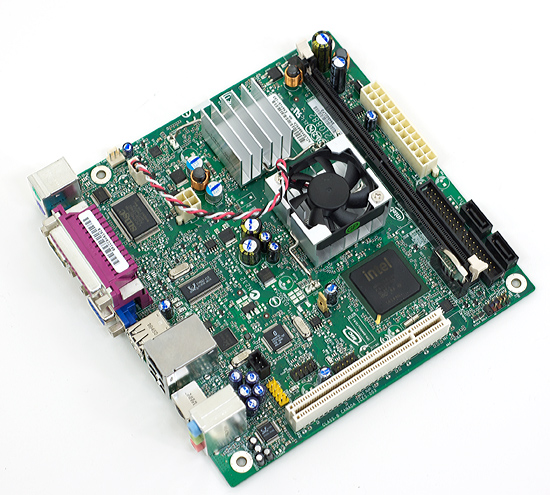
The dual core D945GCLF2 adds a second core to the Atom platform.

Bland ports on the D945GCLF2
The biggest difference is obviously the inclusion of the Atom 330 processor, which is simply two Atom 230 die on a single package - both running at 1.6GHz:
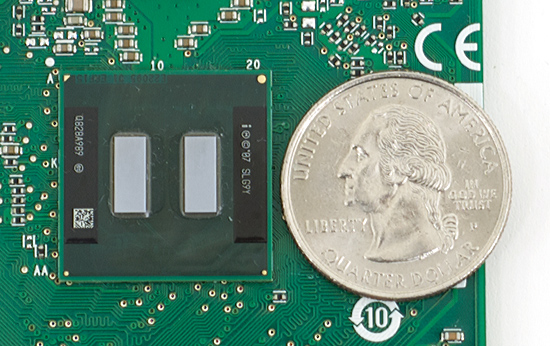
A dual core Atom 330
The faster CPU raises the total price up to $80, still very affordable.
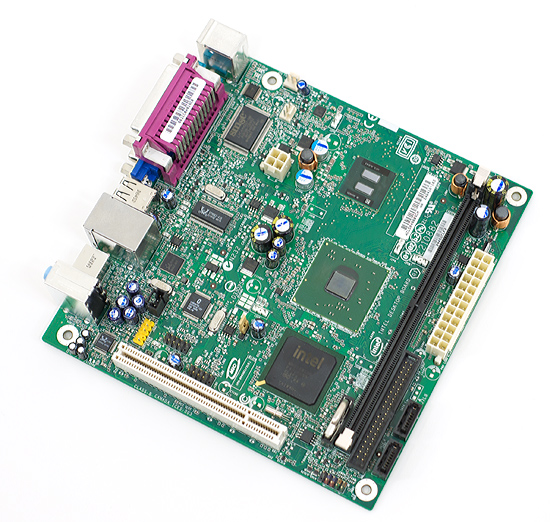
The 45nm Atom processor runs significantly cooler than the 945 GMCH on the board (center chip).
The Intel desktop Atom boards both work just fine but they’re a bit boring. They are reminiscent of Intel’s older motherboards, before it took competition from the tweakable Taiwanese motherboards seriously.
Zotac is the first manufacturer to produce a mini-ITX motherboard based on NVIDIA’s Ion platform. Take Intel’s Atom processor, pair it up with NVIDIA’s Ion chipset (which is basically a GeForce 9300 chipset) and you have the Ion platform.
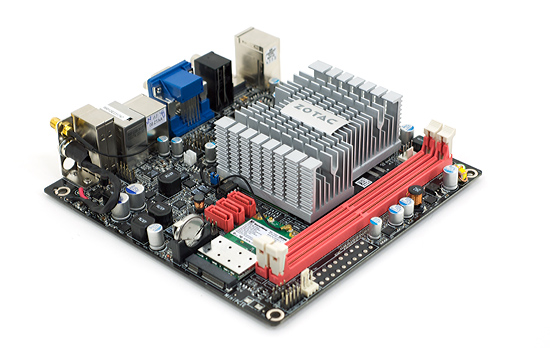










93 Comments
View All Comments
tshen83 - Tuesday, May 12, 2009 - link
A good article. GF9300 has a TDP of 12W. So combined with 8W Atom 330, and 80-90% efficient power supply, gives you the 25W load power figure you see which is phenomenal.(Not to be confused with the brand name from AMD that stands for Opteron rejects)Let me ask you, Anand, a question: just what the fuck is Johan doing these days pumping Quad Socket 8393SE(you can assume the 137W TDP Istanbuls when they come out too) against Nehalem Xeon X5570? One of them is a $10,000 set of CPUs, and the other is $3,000 worth of CPUs let alone (137W*4 power consumption vs 95W*2 on the Xeons) Besides that, now that the fucker is trying to invalidate VMmark. What a Belgian joke.
Griswold - Wednesday, May 13, 2009 - link
You're quite the asshole, arent you?AshleyComputer - Wednesday, July 21, 2010 - link
ION have different, use MCP79 or MCP7A,can do GF9400+Atom 330, GF9400+Atom 230; or GF9300+Atom 330, or GF9300+Atom 230.
If any want to know more about ION, please try to browse: www.micputer.com.